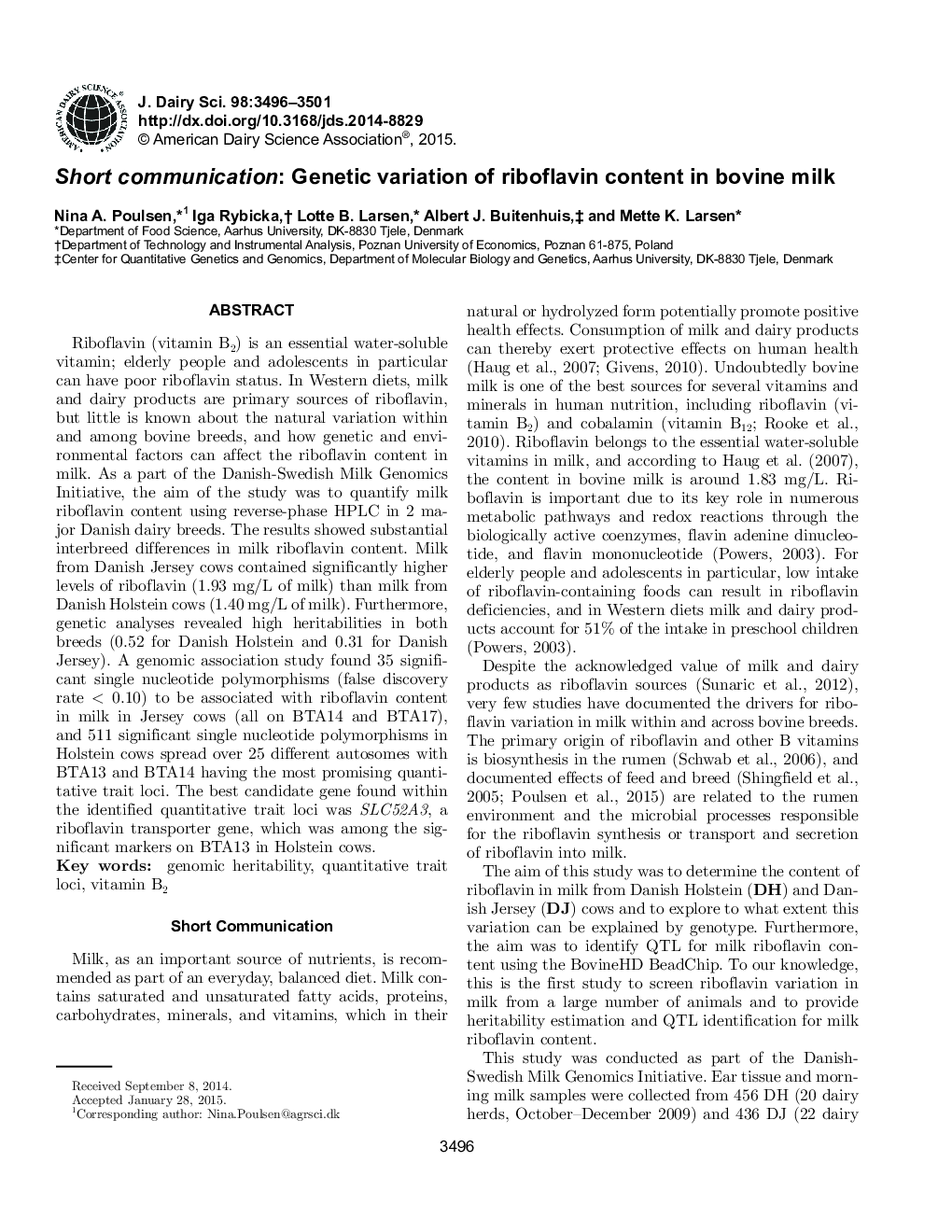| Article ID | Journal | Published Year | Pages | File Type |
|---|---|---|---|---|
| 10975607 | Journal of Dairy Science | 2015 | 6 Pages |
Abstract
Riboflavin (vitamin B2) is an essential water-soluble vitamin; elderly people and adolescents in particular can have poor riboflavin status. In Western diets, milk and dairy products are primary sources of riboflavin, but little is known about the natural variation within and among bovine breeds, and how genetic and environmental factors can affect the riboflavin content in milk. As a part of the Danish-Swedish Milk Genomics Initiative, the aim of the study was to quantify milk riboflavin content using reverse-phase HPLC in 2 major Danish dairy breeds. The results showed substantial interbreed differences in milk riboflavin content. Milk from Danish Jersey cows contained significantly higher levels of riboflavin (1.93 mg/L of milk) than milk from Danish Holstein cows (1.40 mg/L of milk). Furthermore, genetic analyses revealed high heritabilities in both breeds (0.52 for Danish Holstein and 0.31 for Danish Jersey). A genomic association study found 35 significant single nucleotide polymorphisms (false discovery rate < 0.10) to be associated with riboflavin content in milk in Jersey cows (all on BTA14 and BTA17), and 511 significant single nucleotide polymorphisms in Holstein cows spread over 25 different autosomes with BTA13 and BTA14 having the most promising quantitative trait loci. The best candidate gene found within the identified quantitative trait loci was SLC52A3, a riboflavin transporter gene, which was among the significant markers on BTA13 in Holstein cows.
Keywords
Related Topics
Life Sciences
Agricultural and Biological Sciences
Animal Science and Zoology
Authors
Nina A. Poulsen, Iga Rybicka, Lotte B. Larsen, Albert J. Buitenhuis, Mette K. Larsen,
